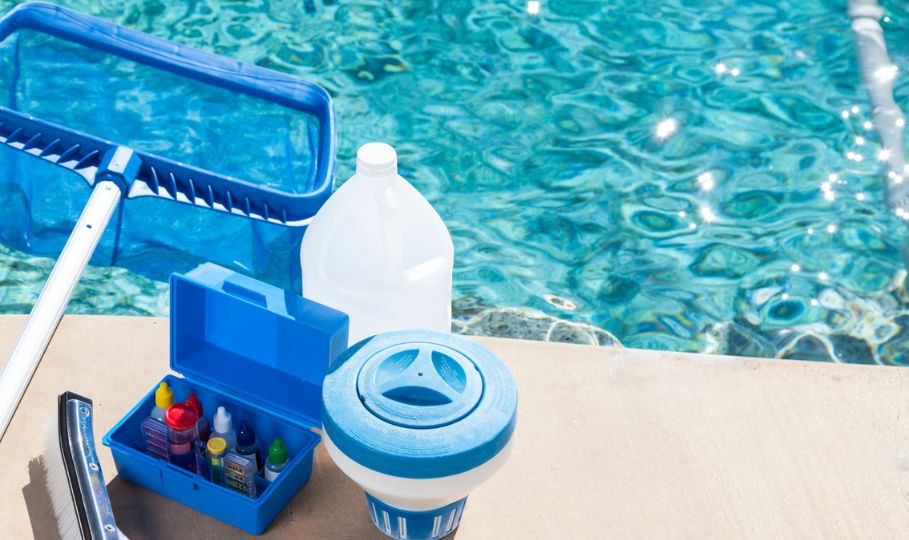Dipping into a cool, refreshing pool on a hot day is pure bliss. But that enjoyment hinges on one crucial factor: clean, safe water. This guide explores various pool disinfection methods, ensuring your swimming space stays sparkling and healthy for everyone.
Why Disinfection Matters
Pool hygiene goes beyond skimming leaves. Contaminated water harbors bacteria, algae, and even viruses, posing health risks like rashes, respiratory problems, and infections. Effective disinfection keeps these threats at bay.
Clean, disinfected water offers a multitude of benefits:
- Reduced health risks: Ensures a safe and healthy swimming environment for everyone.
- Crystal-clear water: Keeps your pool sparkling and inviting.
- Extended pool life: Proper disinfection prevents damage caused by algae and bacteria.
Chemical Disinfection: The Mainstream Method
Chlorine is the classic pool disinfectant, effective against a broad range of germs. It’s available in various forms, like liquid chlorine or tablets, requiring regular monitoring to maintain proper levels.
Bromine is another option, gentler on eyes and skin than chlorine. However, it’s pricier and requires a different balancing act compared to chlorine.
The key to both methods? Maintaining proper pH levels. Imbalanced pH affects disinfection efficiency and can irritate swimmers’ skin. Invest in a reliable pH testing kit for consistent monitoring.
Going Beyond Chemicals: UV Disinfection
Ultraviolet (UV) light technology offers a powerful alternative to chemical disinfection. UV rays disrupt the DNA of bacteria and viruses, rendering them inactive.
Here’s why UV disinfection might be a good fit for you:
- Reduced reliance on chemicals: UV light minimizes the need for harsh chemicals, making it ideal for those with sensitive skin.
- Consistent sanitation: Continuously disinfects water as it flows through the system.
- Environmentally friendly: Uses minimal energy and doesn’t produce harmful byproducts.
Installation involves incorporating a UV lamp into your pool’s filtration system. Maintenance is relatively simple, requiring periodic lamp replacements.
The Power of Ozone: A Boost for Disinfection
Ozone, a form of oxygen, is a powerful oxidizer that effectively purifies pool water. It tackles even chlorine-resistant pathogens like Cryptosporidium.
Here’s how ozone integrates into your pool care routine:
- Ozonation as a booster: Ozone systems can be used alongside chlorine or other disinfectants to enhance their effectiveness.
- Compatibility: Can be integrated with existing pool infrastructure for a seamless upgrade.
Maintaining Crystal-Clear Paradise
Disinfection is just one piece of the puzzle. A consistent cleaning routine is vital. Regularly skim debris, vacuum the pool, and clean the filter to prevent contaminant buildup.
Monitoring water quality is equally important. Use a test kit to check chlorine/bromine levels and pH regularly. Adjust disinfection levels as needed to maintain optimal sanitation.
Here are some common disinfection issues you might encounter:
- Cloudy water: This can indicate an imbalance in pH or disinfectant levels.
- Strong chlorine odor: Signifies excessive chlorine levels. Adjust accordingly.
- Algae growth: Points to insufficient disinfection or filtration issues.
If you face persistent problems, consult a pool professional for diagnosis and solutions.
Conclusion: A Multi-faceted Approach to Safe Swimming
Maintaining a clean and safe swimming environment requires a multi-pronged approach. Whether you choose chemical disinfection, UV technology, or ozone systems, constant monitoring and maintenance are crucial. By following these steps, you can ensure your pool remains a sparkling oasis for worry-free enjoyment.
FAQs
Q. How often should pool disinfection be performed?
A. Disinfection frequency: Disinfection needs vary depending on pool size, usage, and weather. Daily or every other day chlorine checks are a good starting point.
Q. Can I combine different disinfection methods for enhanced efficacy?
A. Combining methods: Yes, combining chlorine with UV or ozone can enhance overall effectiveness while potentially reducing reliance on chemicals.
Q. What are the signs of inadequate pool disinfection?
Signs of inadequate disinfection: Cloudy water, strong chlorine odor, persistent algae growth, and skin irritation can all indicate insufficient disinfection.
Remember, a clean pool is a happy and healthy pool! So, take the plunge and enjoy a refreshing swim with confidence.



